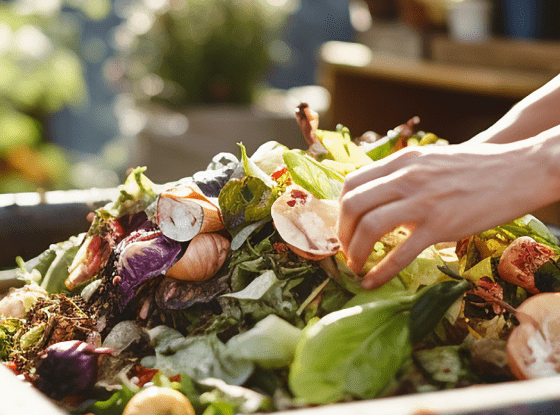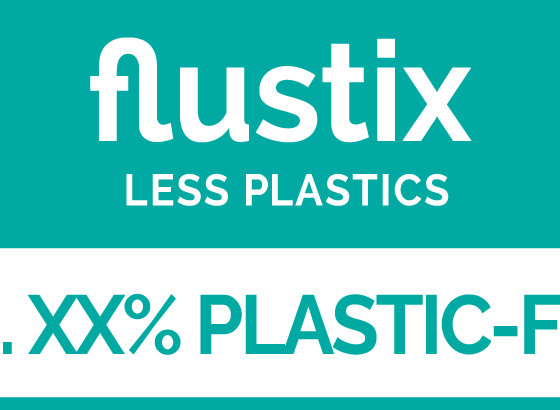DISCUSSION
By our author Carsten Gensing
No one wants plastic in their garden, nor in their clothes or even in their food – and certainly not in their own bodies. Yet the stuff is all around us and, unfortunately, inside us. Plastic is the material that dominates everything. With which we run into ruin and without which we cannot live. We need plastics and yet we have to condemn them because they take hold mercilessly, penetrate everywhere in microscopic scraps and probably never disappear. Everything would be better if we only used plastics where they are really indispensable. That would still be quite a few areas. But significantly fewer than at present. Technology of the future or climate killer? A round trip through our world of plastics.
The dentist would be toothless without plastic
What would it look like in the dentist’s office if there were no plastic? We would sit on the floor, the Doc with bare hands, dental hook and hand drill fumble around in the mouth. Crowns wouldn’t fit because there’s no impression material.
It would be even worse in the hospital. Gloves, sterile disposable syringes, blood bags, tubes, sterile packaging, almost all equipment – we would be missing a hell of a lot. Mechanical heart valves, prostheses, defibrillators, oxygen masks, walkers and wheelchairs are made partly or even entirely of plastic. No one who is affected and needs medical help or device would want to do without it. Understandable.
Despite this, medicine also provides unimaginable amounts of plastic waste. First start-ups are tinkering with solutions, for example, sterile packaging for surgical dishes made of special fabrics that are reusable and can even take on scalpels.
Mobility without plastic? The only option would be the bicycle – without tires
When I (year of construction 1969) was still small, there was still: bicycles, which were manufactured almost plastic-free. Pedals made of metal, handles wrapped in leather, but wait… the tires! Well, plastic was used early on there, too. Such a monster-heavy metal monstrosity would be today a fat brake block for the mobility turn..
Let’s get off the bike into the spaceship. The World Wild Fund For Nature (WWF) judges in its analysis on the subject: “In the aerospace industry, the materials used must be lightweight, withstand extreme temperatures, withstand fuels and chemicals, and resist corrosion.” Plastics are also used in trains and ships, he adds. “Advantage of plastics here: Flexibility and durability. Plastic requires less maintenance than other materials, doesn’t rust and can withstand constant vibration. Basically, using the lightweight material in any kind of means of transportation can save fuel and thus emit less CO2.” The very differentiated view in this WWF contribution documents the ambivalence of the discussion: In other campaigns (including “Schnauze voll”), the WWF mobilizes against any use of plastic..
Away from leather – plastic reigns in football, too
Sports that would be impossible or difficult without plastic: badminton, baseball, American football, golf, surfing, inline skating, all cycling sports, rowing, skiing, squash, diving, table tennis and many others where plastic playground equipment is indispensable. Also in most ball sports nothing goes without plastic.
Even in the popular sport of soccer, plastic belongs on the field: although the ball is still colloquially called “the leather”. However, animal skins no longer have any place in modern balls. The official match balls of the professional leagues and the major European and World Cup tournaments are made of elaborately produced synthetic composites.

In the children’s room, high-quality plastic survives several generations
“Your dad played with these Lego bricks,” is a frequently heard phrase in the children’s room. Manufacturers such as Lego or Playmobil recycle high-quality and low-pollutant plastics that sometimes survive generations and are virtually indestructible. With these so-called system toys, there are also no problems with disposal: 97 percent of people who own Lego pass on the bricks – or keep them themselves. Almost nothing ends up in the trash.
Without plastic we would have canned phones instead of smartphones
Clearly, modern communication is plastic-based, a true plastic paradise, here is felt now really everything from synthetically produced polymers. You don’t have to think that’s nice, but it’s all the more important to make sure that electronic devices are disposed of properly. Another story from my youth: When I was a kid, we used to make phone calls with can telephones. Whereby I’m not sure whether the cord between the cans was also really plastic-free.

The list can be continued. The construction industry also needs plastics. How should we insulate our houses? How would it whistle through the windows? So the conclusion can only be: Plastic is a technology of the future. Isn’t it? Unfortunately, too simple. Because plastics are being used in a hugely insane way. And for which we are all jointly responsible. We also want to take a look at it.
Climate killers: disposable products that end up in the trash after just a few minutes
The throwaway mentality most of us are equipped with is poisoning our environment and heating up the climate. Did you know who invented the disposable plastic bottle? Not that hard to guess. Yes, it was Coca-Cola. “In 1978, Coca-Cola introduced the single-use PET bottle to replace its iconic glass bottle. This step marked the beginning of a new era,” according to the plastic atlas of the Böll Foundation and BUND. Since then, disposable plastic is produced in unimaginable quantities.
The atlas provides an example of this madness: 88 billion disposable plastic bottles are produced annually by Coca-Cola – and is thus the world market leader in packaging waste. If you line up the 88 billion bottles, that’s enough to run a pipeline 31 times from the earth to the moon and back again. The problem is that the bottles remain on the earth, they keep growing and there is no end in sight. A small consolation: In Germany, we at least have a one-way deposit system, but that is a drop in the bucket given the global volume. Nevertheless, we naturally want to keep (or better: expand) the system. Read what flustix founder Malte Biss, a proven plastics specialist, thinks on the subject here.
On the body we wear plastic without sense and reason
“At first glance, textiles made of synthetic fibers have many advantages: They are cheap, dry quickly and adapt to the body,” write the Böll Foundation’s biggest critics of plastics in the Plastic Atlas. Problem: Textiles have degenerated into disposable articles in our society. New designs every week (fast-fashion labels work with up to 50 cycles a year) and cheap clothes that lose their shape after a few washes – the textile industry profits and ensures low inhibition thresholds with ridiculous prices to quickly order a new collection. Polyester, polyamide, acrylic and nylon are in our clothes, and we don’t care that millions of microfibers end up in the wastewater with every wash cycle. Clearly, this is where plastic becomes a climate killer. What can you do? Find out here.
The all killer: microplastics
As if that weren’t enough, now the all-killer is added to the list: Microplastic. It is created from decomposed plastic waste, plastic bags, textile fibers, by tire abrasion (here you read about a vacuum cleaner that collects tire abrasion again), furthermore it is in cosmetics and hygiene items. With the last categories it concerns mostly so-called primary microplastic. Means: The stuff is produced intentionally and in rough quantities and brought into circulation, for example, as peeling in face creams or in detergents..
The disastrous consequences are known: No barrier, no sieve and no net can stop microplastics, they get everywhere, in oceans, people, animals, in the most remote corners of our planet. In a recently published study, a team of Italian researchers found traces of microplastics in 26 of 34 breast milk samples from healthy mothers. Worryingly: Because no connection to the diet of the women could be determined, the researchers:inside assume that the occurrence of microplastics in the environment is the reason for the pollution.
If we do not stop the microplastic avalanche, it looks really bleak. Therefore, it is also up to us to abandon disposable products and certain items that contain superfluous plastics. If you want to do something about it, you can start at home. My colleague Ulrike Seidel has tested solid soaps, shampoos and dishwashing liquids for flustix.

What then is the conclusion? Climate killer or technology of the future?
Malte Biss, flustix founder, says: “We need plastics, they can help us protect the climate. The question is how and where they are used. This has to be the case wherever they bring more advantages than disadvantages. The examples show: For long-life applications, such as medical equipment, this ingenious material is indispensable. Disposable packaging made from fresh plastic, on the other hand, is a climate killer, so we need to move toward reusable and recycled solutions.” In addition, says Biss, we need more sustainability in the value chain: “Recycling must already be planned for when plastics are manufactured. Plastic must not be produced as a throwaway product.”
Environmental protection organization also calls for more cycles
The WWF also agrees with this verdict. “The end of life of products must be considered. No matter in which area materials are used, they should last as long as possible and then be recycled either for a comparable product or another product.”
How can flustix help here? The organization labels goods, packaging and raw materials that are plastic-free or consist proportionately of recycled materials. In addition, flustix tests and certifies the recyclability of packaging. Products that receive the seal with the fish are independently verified and licensed according to internationally recognized procedures. Read more here.
 English
English Deutsch
Deutsch




